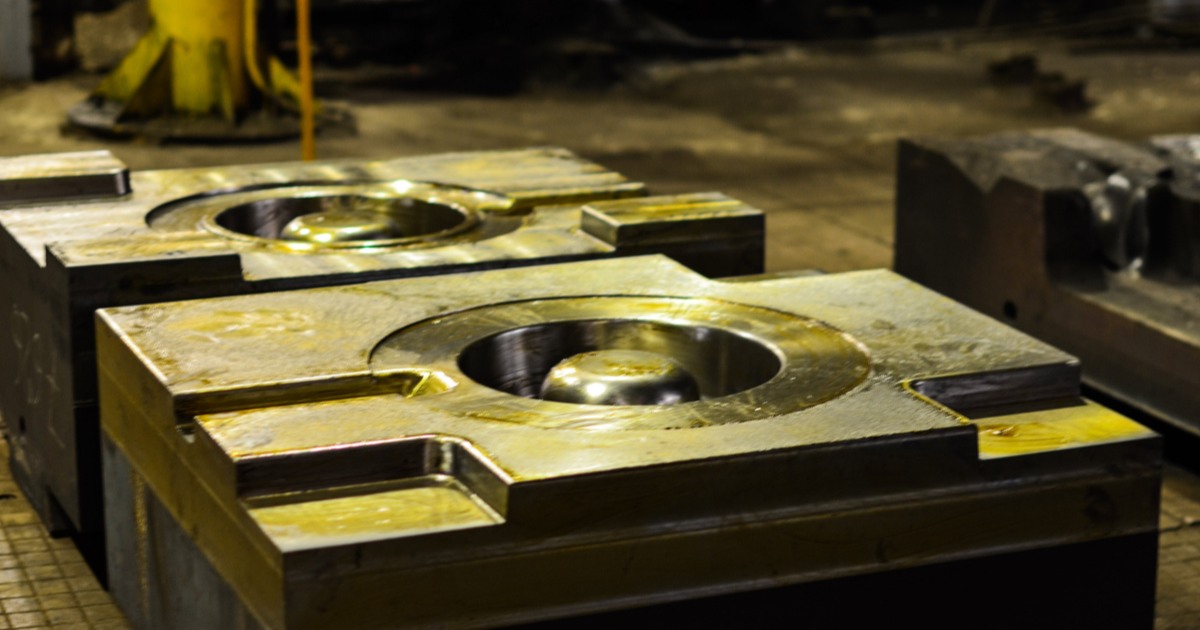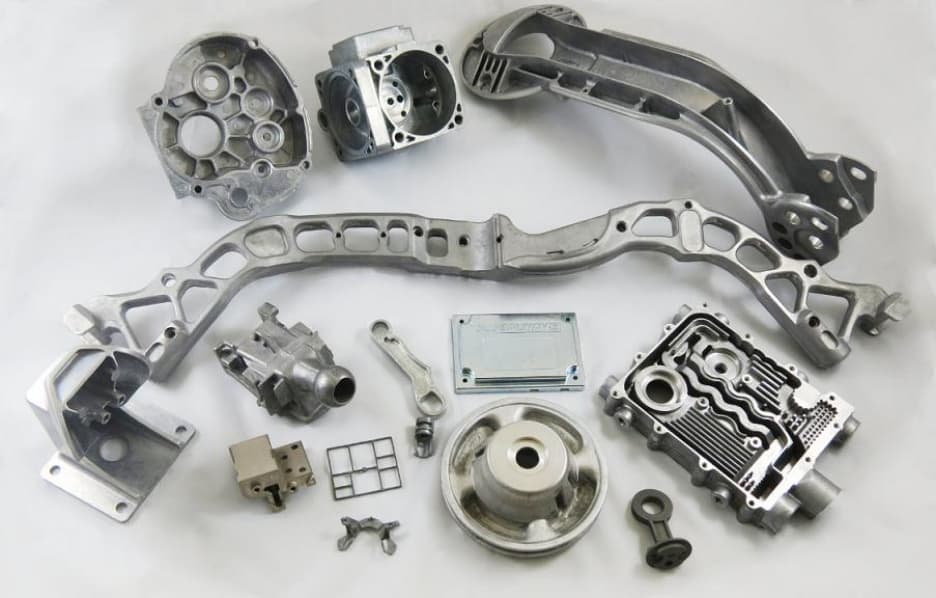How an Aluminum Foundry ensures accuracy through advanced technology
Wiki Article
Comprehensive Guide to the Uses and Manufacturing Techniques in Aluminum Shop Workflow
The substantial overview to aluminum foundry procedures offers essential insights right into the diverse applications of aluminum across different sectors. It systematically examines necessary production strategies, thawing processes, and molding techniques that add to precision and high quality. In addition, the overview highlights the relevance of ending up procedures that enhance both mechanical residential properties and appearance. Understanding these aspects is vital for any individual associated with aluminum manufacturing, elevating questions about ideal techniques and innovations in the area.Summary of Light Weight Aluminum Casting Applications

In addition, the building sector benefits from aluminum castings in architectural parts and architectural components, using durability and resistance to rust. Consumer goods, such as kitchenware and appliances, likewise use aluminum spreadings for their heat conductivity and visual charm. The electronic devices market relies upon aluminum for real estates and warm sinks, making certain reliable thermal management. On the whole, aluminum spreading's adaptability permits it to satisfy varied sector needs successfully, strengthening its importance in modern manufacturing techniques.
Trick Manufacturing Techniques in Light Weight Aluminum Factory
In the domain of light weight aluminum factory operations, numerous manufacturing methods play a crucial function fit the last products that offer diverse markets. Casting Foundry. Trick methods consist of sand spreading, pass away casting, and investment casting, each offering distinctive benefits based upon the application demandsSand casting uses a mix of sand and binder to develop molds, permitting complicated geometries at lower costs. Die spreading, on the other hand, uses high-pressure shot of molten light weight aluminum right into steel molds, making certain accuracy and a smooth surface area finish, perfect for high-volume manufacturing. Investment casting provides remarkable dimensional accuracy and surface top quality, making it appropriate for elaborate styles.
Additionally, strategies such as permanent mold casting and gravity pass away casting further boost the flexibility of light weight aluminum shop procedures (aluminum metal casting). Each approach is chosen based on elements like manufacturing quantity, component intricacy, and material properties, guaranteeing favorable outcomes throughout different applications
Thawing Procedures and Temperature Level Control
Efficient melting processes and exact temperature control are fundamental for accomplishing perfect aluminum shop operations. The melting of aluminum commonly includes different techniques, including crucible melting, induction melting, and rotating melting, each with its very own benefits and applications. Crucible melting is typically used for small batches, while induction melting gives effective home heating and uniform temperature level circulation.
Molding Techniques for Accuracy Castings
Mastering molding methods is vital for creating precision castings in light weight aluminum foundry operations. Numerous techniques, such as sand, investment, and die spreading, play an important role in attaining preferred resistances and surface area finishes. Sand casting, for instance, uses a blend of sand and binder to develop molds, permitting detailed styles and big elements. Financial investment spreading, on the other hand, uses wax patterns that are covered in ceramic product, causing very described and precise forms. Pass away casting utilizes high-pressure shot of molten aluminum into metal mold and mildews, guaranteeing constant measurements and fast production prices.Each method has its advantages and is selected based upon factors such as intricacy, volume, and mechanical residential properties called for. Effective mold design, including airing vent and gating systems, even more boosts the quality and precision of the finished product. Recognizing these molding strategies enables shops to satisfy details market needs and enhance overall functional efficiency.
Finishing Processes to Boost Aluminum Parts
Finishing procedures play a critical function in enhancing the performance and aesthetics of light weight aluminum components. These processes, which follow spreading, goal to boost surface quality, rust resistance, and mechanical residential properties. Usual strategies include machining, which improves dimensions and surface coating, and sprucing up, which boosts visual appeal by producing a smooth, reflective surface.Anodizing is an additional significant process, offering a resilient oxide layer that shields against wear and corrosion while permitting color personalization. In addition, powder finishing offers a large range of finishes and shades, making sure both security and aesthetic improvement.
In many cases, parts may go through shot blasting to eliminate contaminations and improve attachment for subsequent coverings (aluminum casting company). Overall, these ending up procedures are vital for optimizing the performance and lifespan of aluminum components, making them appropriate for varied applications throughout various sectors
Regularly Asked Questions
What Precaution Are Needed in Light Weight Aluminum Factory Procedures?
In aluminum factory procedures, important precaution consist of personal protective devices, appropriate ventilation, fire prevention methods, regular devices maintenance, training for workers on dangers, and keeping clear emergency situation procedures to ensure a risk-free workplace.Exactly How Do Ecological Rules Influence Light Weight Aluminum Foundries?
Environmental laws considerably affect aluminum foundries by enforcing requirements for exhausts, waste monitoring, and source usage. Compliance usually demands investments in cleaner processes and modern technologies, eventually influencing functional costs and manufacturing effectiveness within the industry.What Occupation Opportunities Exist in Light Weight Aluminum Foundry Workflow?
Different occupation chances in light weight aluminum factory operations include duties such as factory specialist, mold and mildew developer, quality assurance examiner, procedure engineer, and manufacturing supervisor, each adding to reliable production and innovative procedures within the sector.Just How Is Quality Assurance Achieved in Light Weight Aluminum Spreading?
Quality control in light weight aluminum casting is attained through extensive inspections, standard screening treatments, and making use of sophisticated innovations. Routine tracking of temperature level, make-up, and dimensional precision assurances items meet defined standards and customer needs.What Are the Common Issues in Aluminum Castings and Their Causes?
Usual issues in aluminum castings consist of surface area, shrinkage, and porosity roughness. Causes often stem from inappropriate mold design, inadequate putting methods, and contamination, affecting the total honesty and efficiency aluminum metal casting of the last item.The considerable overview to light weight aluminum factory procedures presents important understandings into the diverse applications of aluminum across various industries. Light weight aluminum casting plays a crucial role in various industries due to its flexibility and favorable properties. Die spreading, on the various other hand, employs high-pressure shot of liquified light weight aluminum into steel mold and mildews, ensuring precision and a smooth surface area finish, suitable for high-volume production. In addition, methods such as permanent mold spreading and gravity pass away casting additionally improve the versatility of aluminum shop operations. Mastering molding strategies is important for creating precision castings in light weight aluminum factory procedures.
Report this wiki page